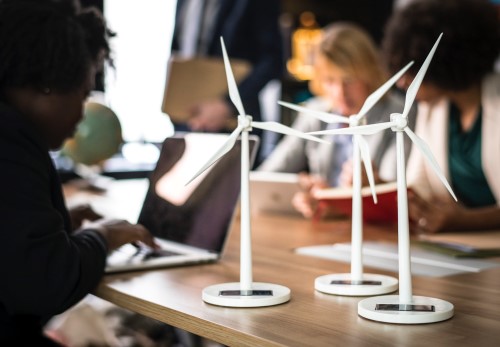Inside Supply Management Magazine
Sustainability Is More Than a Workplace Initiative; It’s a Lifestyle Initiative

Sustainability is often thought of as an energy-savings and environmental measure in facilities management. But “the aperture is opening a little bit more,” says Sudhi Sinha, vice president and general manager, data enabled solutions at Johnson Controls in Milwaukee. “We’re moving from looking at it from a built environment to a broader enterprise environment.”
Facility sustainability goals have typically been centered around reducing waste of natural resources, like lowering water consumption and reducing energy usage. One action, for example, is improving lighting systems — lighting can account for as much as 30 percent of a building’s energy usage, Sinha says. Heating and cooling (HVAC) systems also have been high energy users, accounting for about 50 percent of the energy consumed in buildings, he says: “A large part of that energy used to historically come from non-renewable sources.”
Strides in equipment efficiency combined with sustainability awareness are causing organizations to shift sustainability goals to a broader enterprise environment perception, Sinha says. Now, organizations are looking not only at reducing waste, but at what drives their facilities’ energy consumption and how they can reduce or optimize it.
“People are expanding their aperture from looking at sustainability not only from a HVAC lens, but the end-to-end workplace experience — from employee as well as business standpoints,” he says. They perceive it using a “life-cycle perspective of people and facilities and their engagement with facilities. And they’re not only looking backward, at what should they have done, but what could they do looking forward — what is most likely going to happen and what actions they can take to change the outcome.”
Factors include workplace trends and culture, as well as transportation.
Workplaces. As work cultures are changing, so are technology and demographics, Sinha says: “Younger generations work differently. For example, many millennials are totally comfortable working out of a Starbucks.” Telecommuting affects a building’s usage — fewer work stations are needed, and less energy is consumed.
Transportation. “Historically, people used to have assigned parking places — everybody had a car. That’s not true anymore,” Sinha says. Alternate modes of transportation — light rail and other forms of public transportation — impact a facility’s footprint and design, he says: “Transportation is becoming a bigger contributor to how an organization addresses sustainability goals.”
Additionally, organizations are modeling scenarios to determine potential future energy consumption and looking at renewable resources, Sinha notes.
By taking a broader enterprise look and looking forward toward the future, Sinha says, organizations can drive:
●Sustainability improvements that have economic benefits. “If I use natural resources less and I’m able to recycle resources, this results in a positive economic outcome, which every company wants,” he says.
●More “social awareness that the environment matters, we need to save the planet, and we need to protect the environment in a different way than we’ve done in the past,” he says.


